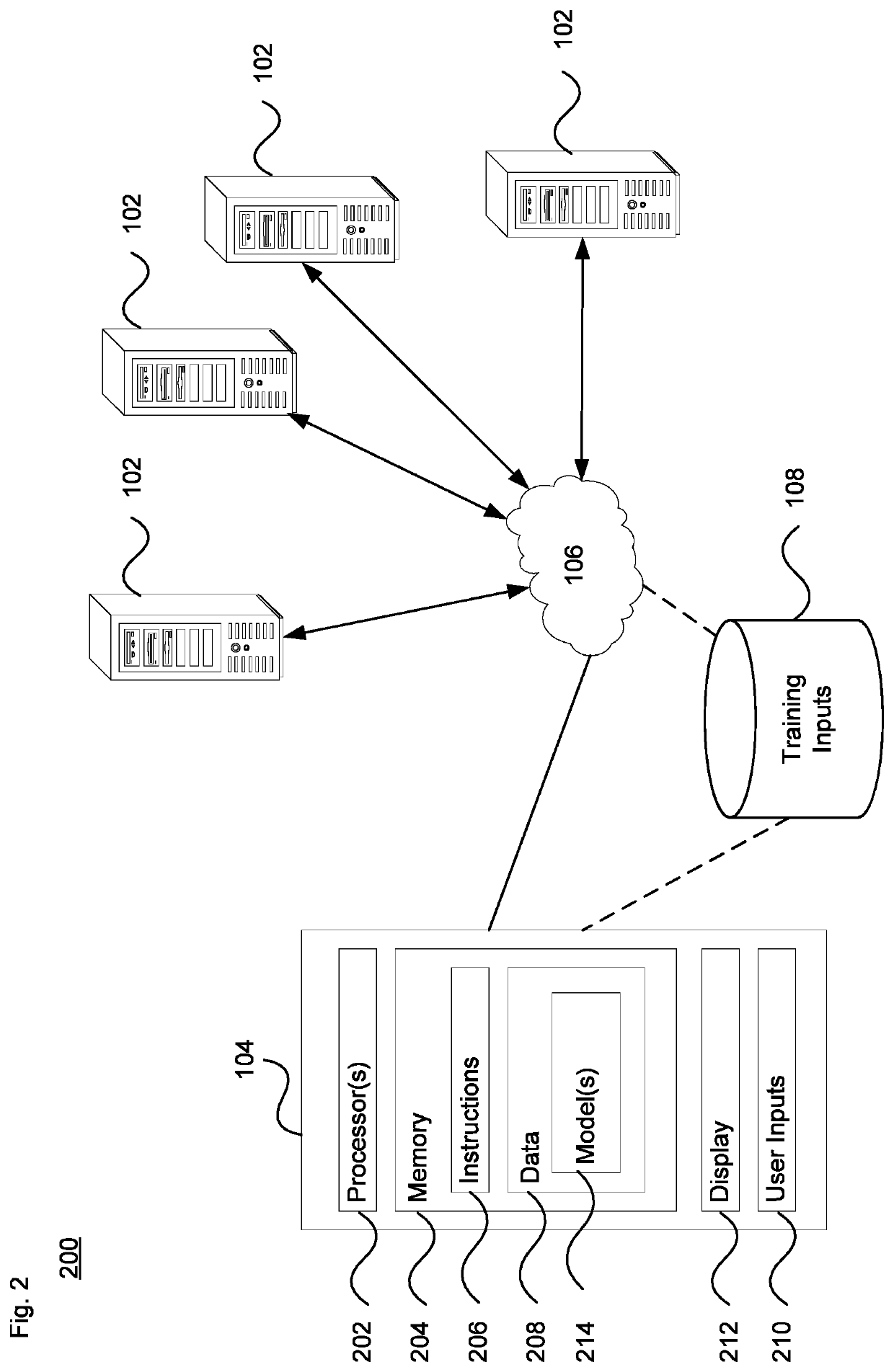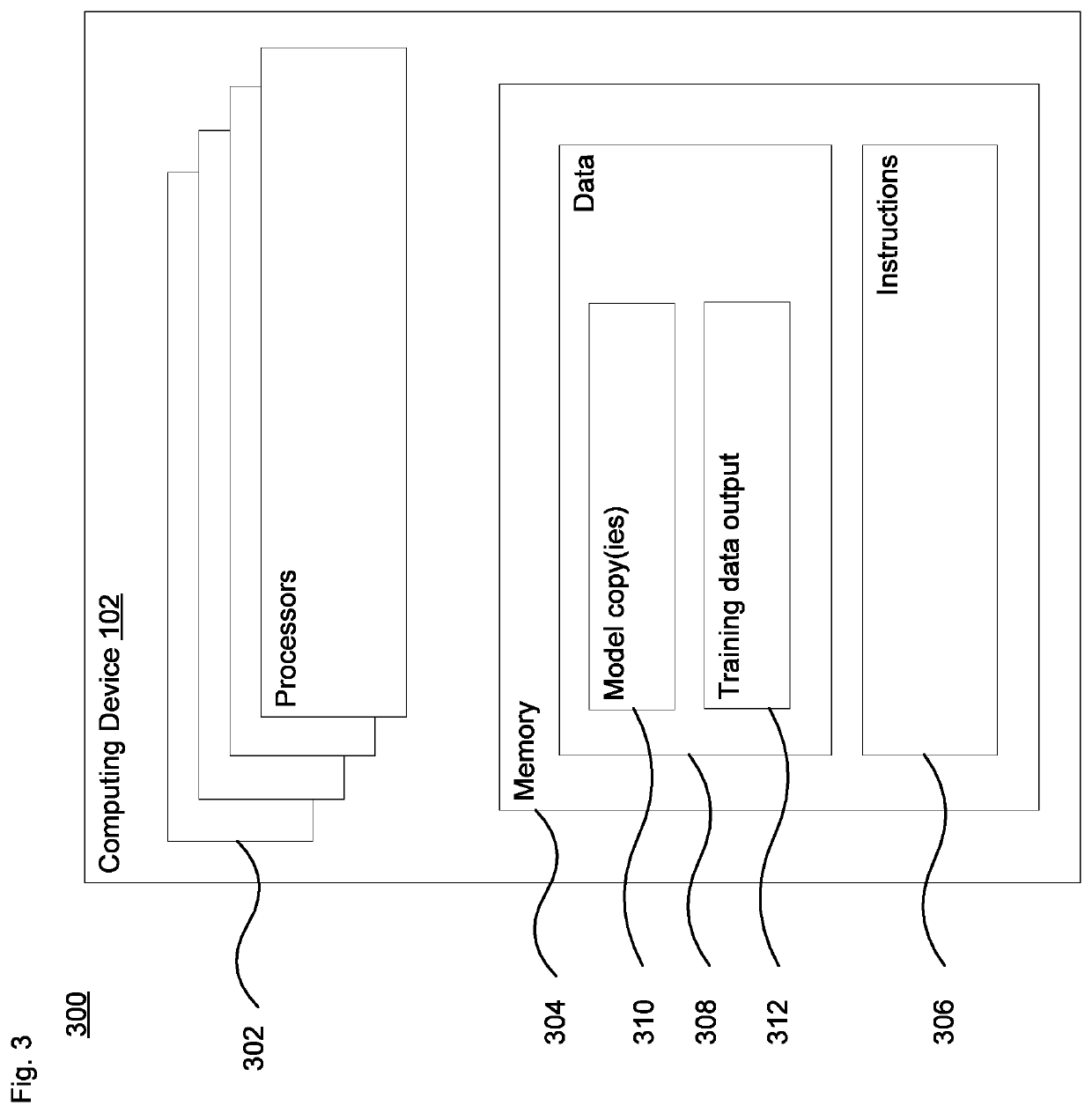Machine learning training platform
a technology for training platforms and machines, applied in the field of machine learning training platforms, can solve the problems of requiring a significant amount of resources and time, and affecting the overall process,
- Summary
- Abstract
- Description
- Claims
- Application Information
AI Technical Summary
Benefits of technology
Problems solved by technology
Method used
Image
Examples
Embodiment Construction
Overview
[0019]A distributed system for training a machine learning model is configured to receive user input including definitions for the model and training data for training the model. The distributed system includes a plurality of computing devices, where each of the computing devices may have one or more processors. As such, the distributed system may provide more available resources for training a given model than a single processing device. This approach avoids the need for a developer or other user to modify the code for the model in order to train that model on the distributed system. The net effect is to maximize throughput across the system without any tuning by the user. By way of example, the model could be a stop sign classifier that determines whether a portion of an image is a stop sign or not.
Example Systems
[0020]FIG. 1 illustrates an example distributed system 100 for generating and reviewing labels according to aspects of the disclosure. In this example, the distri...
PUM
 Login to View More
Login to View More Abstract
Description
Claims
Application Information
 Login to View More
Login to View More - R&D
- Intellectual Property
- Life Sciences
- Materials
- Tech Scout
- Unparalleled Data Quality
- Higher Quality Content
- 60% Fewer Hallucinations
Browse by: Latest US Patents, China's latest patents, Technical Efficacy Thesaurus, Application Domain, Technology Topic, Popular Technical Reports.
© 2025 PatSnap. All rights reserved.Legal|Privacy policy|Modern Slavery Act Transparency Statement|Sitemap|About US| Contact US: help@patsnap.com



